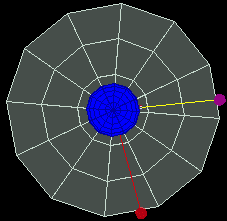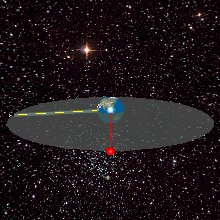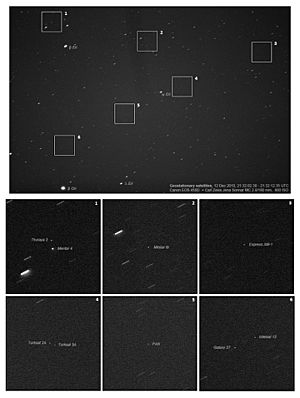Geostationary orbit facts for kids
A geostationary orbit (also called GEO) is a special path a satellite takes around Earth. It's directly above the equator, which is the imaginary line around the middle of our planet.
Satellites in this orbit take exactly 24 hours to go around Earth once. This is the same amount of time it takes for Earth to spin around itself. Because of this, a satellite in a geostationary orbit always appears to stay in the same spot in the sky if you're watching from Earth. It looks like it's not moving at all!
Contents
Why Geostationary Orbits Are Useful
Satellites in geostationary orbit are super helpful for many things.
Communication Satellites
Many communications satellites use these orbits. This is because their antennas on Earth don't need to move to follow them. Imagine a satellite dish on your roof. If the satellite it's talking to is always in the same spot, the dish can stay pointed in one direction. This makes it much cheaper and easier than having a dish that constantly moves to track a satellite. Each satellite stays above the equator at a specific longitude (east or west position).
Weather Satellites
Weather satellites also use geostationary orbits. They can continuously watch the same area of Earth. This helps scientists track storms, monitor weather patterns, and predict changes.
Who Thought of This Idea?
The idea of using a satellite like this for communication was first mentioned in 1928 by Herman Potočnik. However, it became really famous in 1945. A British science fiction writer named Arthur C. Clarke wrote a paper about it. He explained how these orbits could be great for broadcasting and relaying radio signals around the world.
Because of his work, this orbit is sometimes called the Clarke Orbit. The area of space where these orbits exist is also called the Clarke Belt. It's about 35,786 kilometers (22,236 miles) above the sea level, right over the equator. The entire Clarke Orbit is about 265,000 kilometers (164,664 miles) long.
How Geostationary Orbits Work
For a satellite to be in a geostationary orbit, it needs to follow some specific rules.
Orbiting with Earth's Spin
The satellite must orbit in the same direction that Earth spins. Its orbital period, which is the time it takes to complete one full circle, must be almost exactly 24 hours. This is known as a sidereal day.
Staying Above the Equator
The orbit has to be directly above the equator. If the orbit were tilted, the satellite would appear to move north and south from Earth's perspective. For example, if it was directly above New York City, it would also have to swing far south on each orbit. To stay in one fixed spot in the sky, it must always be directly over the equator.
The Perfect Height
The height of a geostationary orbit is very precise. The speed a satellite needs to orbit depends on how far it is from the center of Earth. An orbit is a careful balance between the Earth's gravity pulling the satellite down and the centripetal force (the force that keeps it moving in a circle) pushing it outwards.
Objects closer to Earth feel more gravity. This is why satellites in low orbits, like the International Space Station, orbit very quickly. They complete a circle in about 90 minutes. Objects farther away take much longer. For example, the Moon takes about 29 days to orbit Earth. The geostationary height is the exact distance where a satellite orbits at the perfect speed to match Earth's rotation.
Small Delays in Communication
Because these satellites are so high up, it takes a little bit of time for radio signals to travel to them and back to Earth. This travel time is about 1/4 of a second each way. So, if you're watching a live TV interview where a reporter is far away, you might notice a small delay. It takes 1/4 second for the signal to go from the TV studio to the satellite and then to the reporter. Then, it takes another 1/4 second for the reporter's signal to go back to the satellite and then to the studio. This half-second delay can sometimes be noticeable in news broadcasts.
Satellite Graveyard
When satellites reach the end of their useful life, it's too expensive to bring them all the way back down to Earth. Instead, they are moved a little bit higher, about 300 kilometers (186 miles) above the geostationary orbit. This area is called a 'graveyard' orbit. Satellites placed here will stay out of the way of active satellites for a very long time.
Images for kids
See also
 In Spanish: Órbita geoestacionaria para niños
In Spanish: Órbita geoestacionaria para niños









